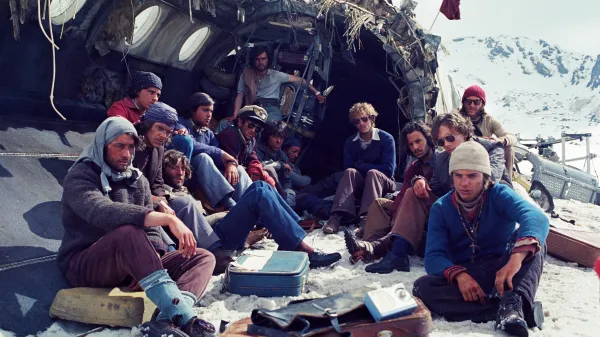On October 13, 1972, a chartered Uruguayan Air Force flight carrying 45 people, including a rugby team and their friends and family, crashed in the Andes Mountains. What followed was a harrowing tale of survival, resilience, and the strength of the human spirit.
The Flight and Crash
The flight, known as Uruguayan Air Force Flight 571, was en route from Montevideo, Uruguay to Santiago, Chile. The passengers were members of the Old Christians Club rugby team, along with their friends and family, and a few crew members.
The flight was uneventful until it encountered severe turbulence and crashed into the Andes Mountains. The impact killed 12 people instantly, and another five died shortly after due to injuries sustained in the crash.
The remaining 28 passengers were left stranded in the harsh, freezing conditions of the mountains, with little hope of rescue.
Survival Strategies
The Society of the Snow

The survivors quickly realized that they needed to work together to survive. They formed a group called the “Society of the Snow,” and each member was assigned a specific role and responsibility.
Some were in charge of rationing food and water, while others were responsible for building shelters and keeping the fire going. They also designated a leader, who would make the final decisions for the group.
This organization and division of labor helped the group stay focused and work towards a common goal – survival.
Resourcefulness and Adaptability
The survivors had very few resources at their disposal, but they made the most of what they had. They used the wreckage of the plane to build shelters and create a makeshift kitchen. They also used the seats and insulation from the plane to create warm clothing and blankets.
As time went on, they became more resourceful and adapted to their surroundings. They learned how to catch and cook wild birds and rabbits, and even resorted to eating the flesh of their deceased friends and family members to survive.
Mental Strength and Resilience
Perhaps the most crucial survival strategy for the group was their mental strength and resilience. They faced unimaginable challenges, from freezing temperatures and harsh conditions to the loss of loved ones and the constant threat of death.
But they refused to give up. They found ways to stay positive and keep each other motivated, whether it was through prayer, storytelling, or playing games. They also drew strength from their faith and the belief that they would be rescued.
The Rescue
After 72 days of surviving in the mountains, two of the survivors, Nando Parrado and Roberto Canessa, decided to embark on a dangerous journey to find help. They trekked through the mountains for 10 days, facing avalanches, blizzards, and treacherous terrain.
Finally, on December 22, 1972, they stumbled upon a Chilean shepherd, who alerted authorities and led them to the remaining survivors. The group was rescued and brought back to civilization, where they were reunited with their families and loved ones.
The Aftermath
The story of the Uruguayan Air Force Flight 571 and the Society of the Snow captured the world’s attention and inspired countless people. It also sparked debates and discussions about survival, morality, and the human will to live.
The survivors faced many challenges after their rescue, including physical and emotional trauma, survivor’s guilt, and the media’s intense scrutiny. But they also found strength and resilience in each other and formed lifelong bonds.
Lessons Learned
The story of the Society of the Snow teaches us many valuable lessons about survival, resilience, and the human spirit. Here are a few key takeaways:
The Power of Teamwork

The survivors of the Uruguayan Air Force Flight 571 would not have survived without their teamwork and organization. By working together and utilizing each other’s strengths, they were able to overcome seemingly insurmountable challenges.
The Importance of Adaptability
In a survival situation, being adaptable is crucial. The survivors had to adapt to their surroundings and make the most of the limited resources they had. This flexibility and resourcefulness were key to their survival.
Mental Strength and Resilience
The Society of the Snow faced unimaginable challenges, but they refused to give up. They found ways to stay positive and motivated, even in the face of death. This mental strength and resilience were crucial to their survival.
Conclusion
The story of the Uruguayan Air Force Flight 571 and the Society of the Snow is a testament to the strength of the human spirit. It teaches us valuable lessons about survival, teamwork, and resilience, and continues to inspire people around the world.
While the survivors faced unimaginable challenges, they never lost hope and refused to give up. Their story is a reminder that even in the darkest of times, there is always hope and the possibility of survival.






























































